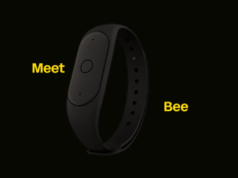Those hoping for Google to deliver more details of a quantum leap towards next-gen virtual reality may have been a bit disappointed Tuesday when the company chose to promote wide user accessibility above cutting edge features in its VR headset.
The Daydream View doesn’t have any buttons or embedded sensors; you just stick your phone in it and VR happens.
Google is really targeting this device towards the average smartphone user and less so towards the inspired VR early adopter. In order to make this appeal, Google took everything that has worked on mobile VR: 360 video, 360 photos and games, and then it showed it off like it was all new again. There wasn’t an attempt from Google to ship its conception of a VR killer app, instead it seems the company feels that promoting a Cardboard+ experience is enough to convince prospective Pixel patrons to pay $79 for the View.
I had a chance to go hands-on with it after Google’s event today and it’s clear that the company is framing this as more of a successor to its Cardboard platform, rather than a total reinvention of it. The form factor is much more palatable, the philosophy is the same: bring the masses simple VR.
The first thing you notice about the headset is its comfort. Google went out of its way to prioritize a design that wasn’t too bulky, wasn’t too complicated and was soft to the touch. The fabric exterior seems quite breathable and was quite a bit more comfortable to use than Samsung’s updated Gear VR. The ergonomics are generally awesome, though I did notice some light sneaking in from the rigid edges of the View, causing some unfortunate glare on the lenses. Unlike the host of Cardboard headsets made for the platform, this one has a head strap which was pretty simple to adjust. Overall it feels great.
The next thing you’ll notice is that the Daydream experience isn’t nausea-inducing. Google seems to have really gotten VR mode in Android Nougat right for the compatible phones that support it. Sub-20ms latency is what keeps the image on the screen corresponding with your head movements. It’s a more noticeable difference than you might think, but it really allows you to engage with content for much longer than a couple minutes. This is clearly the highlight of Daydream and it really is a marked upgrade.
A couple of the content pieces I got to try out integrated the View’s new Daydream controller. It’s pretty cool, though if you’ve used any high-end systems like the HTC Vive, Oculus Rift or PS VR, you’ll probably be annoyed by its constraints. With the high-end systems, the controllers are positionally tracked in-space, meanwhile the Daydream controller is about as powerful as a Wiimote. This means you can use the controller’s accelerometer to manipulate an objects or select interface items like a laser pointer, but you certainly won’t be using the controller as a lightsaber in any titles. The controller slots into the headset when it’s not in use but I still bet a lot of people are going to lose this in no time. Bringing the controller into the mobile VR experience will really allow Daydream content to expand much further than Cardboard apps ever could.
Virtual reality is currently in a position where it’s being defined by the influencers and insiders rather than regular consumers. Google wants to change that schema, but how it influences the industry as a whole depends on the standards developers choose to adopt to. Thanks to the extensiveness of the Android platform it seems like Google can pretty much do whatever it wants but if a company like Oculus can show off a mobile VR solution that gives developers more creative freedom, say a mobile VR headset with positional tracking, than it’s a little more up in the air. We don’t know what Oculus, which helps make Samsung’s Gear VR, has up its sleeve in terms of a renewed strategy for mobile, but we’ll likely hear more later this week at the company’s Oculus Connect 3 developer conference.
Overall, the Daydream platform seems to be an updated version of Cardboard that actually works well. The headset is totally cool and while it would’ve been nice to see Google push the innovation envelope a bit in terms of its first broad offering for Daydream, it’s clear that they’re aiming to satisfy the average user even if that means hugging to the VR rulebook a bit.






